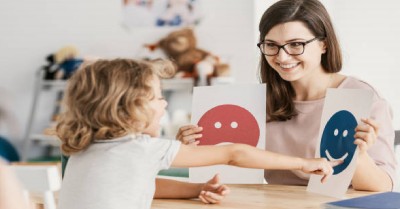In early childhood, among the most important aspects of learning self-regulation is the ability to identify and label emotions. Unless children are able to understand and manage their emotions, they might end up expressing them through negative and disruptive behaviours. In this context, the Zones of Regulation approach offers valuable support to children’s efforts to recognise and manage their own emotions.
What Are The Zones of Regulation?
Developed by Michelle Addamo and her colleagues in 2019, the Zones of Regulation approach uses four colours to help the children identify how they are feeling in the moment based on their emotions and level of alertness. They are:
- Blue (Slow) Zone - when your body is running slowly, such as when you are tired, sick, sad or bored.
- Green (Go) Zone- when you are ready to learn and “good to go.” You feel happy, calm and focused.
- Yellow (Caution) Zone- when you feel your engine beginning to run high, such as when you are frustrated, overwhelmed, silly, wiggly, excited, worried, anxious, or surprised.
- Red (Stop) Zone- is when you have “flipped your lid” and you have extreme feelings such as terror, uncontrolled anger, aggression, or elation.
How To Use The Zones of Regulation?
The Zones can be used to teach children how to identify and name emotions they are experiencing in the following ways:
- Installing zone lights, as Addamo did, can be as simple as buying four light switches from Kmart and covering them with cellophane in blue, green, yellow and red colours. Each zone light should have labelled pictures of emotions like Sad, Sick / Hurt, Tired, Bored, Moving Slow in the blue zone and ideally a mirror so that children can match their own emotions at that moment to a labelled picture and identify their own ‘zone’.
- Using storybooks such as The colour monster by Anna Llenas which use similar colours to identify the emotions as used in the Zones.
- A table-top matching game where the children can match face emotions cards with the zones.
Used in the above ways, the zones would help children not only notice their own body’s emotional signals but also help with reading emotional cues in their peers, understand how their own behaviour impacts those around and in all these ways, better ‘read’ social contexts. For example, identifying someone was sad, they could offer them a drink or ask them to play whereas before the emphasis was on their own feelings and perhaps not identifying those of others.
Apart from identifying emotions, the Zones of Regulation also helps children with strategies to support self-regulation. They learn that they move through their Zones throughout the day, and that they can improve their control over their Zones through practice. If a child seems to get stuck in a particular zone, like ‘I am in the red zone because I’m angry and if the educator knows that the child isn’t really angry, then the educator can help the child move between zones by saying ‘You look like you are in the green zone, your face looks happy, I can see a smile when you are talking, shall we go and look in the mirror?’
Above all, educators need to remember to model/teach children that none of the Zones is “bad” or “naughty” and such terms are not to be used at the service. The point is to use the Zones to understand what one is feeling and how to change Zones to better match one’s level of alertness and emotions appropriate to the situation.
References:
- Emotional Literacy and Self-Regulation, ACECQA
- Information about the zones of Regulation, Department Of Education SA
